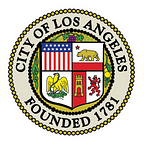Stacey Higginbotham’s recent post neatly summarizes a challenge every smart city faces: How do we introduce new technologies that improve service delivery?
Higginbotham’s most well-received point is about practicality and user-centered design. She believes that “the most successful companies selling technology to cities will need to make their tech disappear into their service.”
This is precisely the point of new technologies, to make services more accessible without adding a learning curve for the users. There are numerous examples in government where this didn’t work. We’ve all browsed convoluted websites and CRM systems that were poorly designed and difficult to navigate. At the rate in which cities are seeking outside vendors for new innovations or redesigns of current services, it’s imperative that we seek technologies and tools that will disappear into city services.
“I agree with her statement that Tech should be blended into the service to improve and ease the process of dealing with ‘government’ and it’s inherent bureaucracy; it should never be ‘Tech for tech’s sake,’” explains Joyce Jinde Edson, the Assistant General Manager and Deputy Chief Information Officer for the City’s Information Technology Agency (ITA). Edson oversees the ITA’s development of City apps.
“Every system, every feature enhancement we make, especially to a public facing app is done with the user in mind — make it simple, natural and as engaging as possible.”
Constraints such as cost or legal requirements may inhibit the design process so Edson and her team “try to mitigate as best [they] can using Tech.”
We face similar challenges as Edson’s team when developing new tools for DataLA users. Many of our users are housed in city departments so our goal is to bring in tools that ease the burden of data sharing for city employees. Before we green-light a new tool, the key questions we need to ask ourselves are:
- Will this new data platform/civic engagement tool/performance dashboard/other technology directly serve citizens and improve delivery?
- What problems will this technology resolve?
- Can we improve an existing system to address these problems?
These questions serve a dual purpose: to help our team make an informed decision about whether a new tool is appropriate and provide tech partners with the context they need to create “disappearing technologies” that will benefit city employees and residents.
